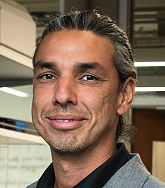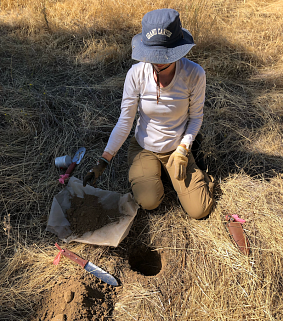
Climate change continues to challenge humanity. To address the rising greenhouse gas emissions, which contribute to climate change, College of Arts and Sciences researcher Lucas Silva and his team are studying the effectiveness of riparian reforestation—the replanting of vegetation along rivers—in sequestering and storing carbon.

“The inspiration for this project stemmed from the urgent need to bridge interdisciplinary research for effective climate change mitigation and adaptation strategies,” says Silva, a professor in the Environmental Studies Program and Department of Biology. He hopes his approach—co-producing science with community partners and NGOs in vulnerable regions—will reach beyond Oregon.
The Soil Plant Atmosphere (SPA) Lab was created in 2016 when Silva moved from the University of California Davis to the University of Oregon. This new project, funded by The Nature Conservancy (TNC), adds to a series of studies, including several National Science Foundation grants and a long-term 140-acre experiment contracted by the Eugene Water and Electric Board near the McKenzie River in Springfield.
This research team in SPA is led by postdoctoral fellow Regina O'Kelley and master’s student Holly Amer, in collaboration with TNC’s landscape ecologist Rose Graves. The team is integrating science, community engagement and technological advancements to address climate change challenges in the Pacific Northwest.
“In Oregon, we don’t have good numbers on the amount of carbon that’s being stored in these riparian forests, especially replanted riparian forests,” O’Kelley says. “What we especially would like to understand more is how the rate of carbon accumulation interacts with other environmental factors.”

The team is studying aspects of riparian environments, such as stream size, temperature and slope near the river, and their interactions with land management and carbon storage.
O’Kelley and Amer spent the summer gathering data at various riparian restoration sites around Oregon. The team is researching riparian sites throughout the Willamette Valley and in the Klamath mountain region. They have plans to collect data along the Oregon coast in summer 2024.
Silva, who was named Philip H. Knight Chair of Natural Sciences in 2023, says the university is an ideal place for this research because of its “strong emphasis on interdisciplinary collaboration and commitment to addressing local as well as global environmental challenges.”
He studies the “zone of friction” between the short-term, self-interested gain of individuals and longer-term shared community goals. These areas provide a framework that can enhance the understanding of the biological and environmental processes crucial for sustainability.
One of the most challenging aspects of his research has been harmonizing diverse interdisciplinary perspectives and methodologies into a cohesive research approach. It’s a necessary struggle to train the next generation of scholars and academics who can work as a team to address fundamental scientific questions, Silva says.
The Silva lab meets their research goals while engaging community partners to improve decision-making and inform collective action.


We know that riparian restoration helps prevent stream erosion. We know that it can help with water temperature with shading with wildlife habitat. What’s not as well understood is the carbon accumulation, which is a potential benefit from this research.Regina O’Kelley, postdoctoral student in biology
To help combat climate change, some companies or individuals responsible for greenhouse gas emissions can purchase carbon credits. The lab’s research is a way to examine what that carbon benefit could look like in Oregon, O’Kelley says.
The project’s ability to examine the complex issue of climate change from numerous angles is what will allow the research to be impactful, Silva says.
“One aspect worth mentioning is the strong track record UO scholars have in conducting innovative research to influence policy decisions,” he says. By providing scientifically sound insights for more effective decision-making, UO researchers are in a unique place to create real change, he adds.
—By Alyson Johnston, College of Arts and Sciences

